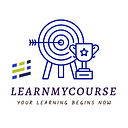Developing a RAG (Retrieval-Augmented Generation) and LLM (Large Language Model) application requires a combination of technical skills, tools, and domain knowledge. Here’s a breakdown of the prerequisites to get started:
- Core Prerequisites:
a. Understanding of Natural Language Processing (NLP):
• Basics of NLP: Tokenization, embeddings, attention mechanisms.
• Knowledge of pre-trained language models like BERT, GPT, or similar.
b. Familiarity with Large Language Models (LLMs):
• Understanding how LLMs work (e.g., transformer architectures).
• Knowledge of fine-tuning, prompting, and inference with LLMs.
• Hands-on experience with APIs or frameworks like OpenAI, Hugging Face, or Google Gemini.
c. Retrieval Techniques:
• Basics of Information Retrieval (e.g., vector search, dense embeddings).
• Familiarity with tools like FAISS, Weaviate, Pinecone, or Elasticsearch.
• Knowledge of document retrieval techniques (BM25, semantic search).
2. Programming Skills:
• Proficiency in Python, as it’s the primary language for AI/ML and RAG applications.
• Familiarity with popular libraries and frameworks:
• Hugging Face Transformers: For working with pre-trained LLMs.
• LangChain: For chaining prompts and retrieval tasks.
• TensorFlow or PyTorch: For deep learning models (if building custom components).
3. Data Handling and Preprocessing:
• Skills in data cleaning and preprocessing text data.
• Experience with:
• Handling structured/unstructured datasets (e.g., CSV, JSON, text files).
• Vectorizing data using embeddings (e.g., Sentence Transformers, OpenAI embeddings).
4. Vectorization and Embedding Models:
• Familiarity with embedding techniques to represent text/data in vector space.
• Tools/Models for generating embeddings:
• Sentence Transformers (e.g., SBERT).
• Pre-trained models from Hugging Face.
• OpenAI’s text-embedding-ada-002.
5. Knowledge of Retrieval Systems:
• Vector Databases:
• How to store and retrieve vectorized representations of documents.
• Using tools like FAISS, Pinecone, or Weaviate.
• Hybrid Search Techniques:
• Combining dense (semantic) and sparse (keyword) search for improved results.
6. APIs and Cloud Services:
• Familiarity with cloud-based APIs for LLMs (e.g., OpenAI GPT, Google Gemini).
• Understanding of how to integrate REST or GraphQL APIs.
• Knowledge of serverless platforms for deploying applications (e.g., AWS Lambda, Google Cloud Functions).
7. Deployment and Scaling:
• Containerization: Using Docker to package your application.
• Orchestration: Deploying applications on Kubernetes for scaling.
• Experience with CI/CD pipelines for continuous integration and deployment.
8. Prompt Engineering:
• Crafting effective prompts to guide the LLM’s behavior.
• Using chain-of-thought prompting or other advanced techniques to improve output quality.
• Familiarity with tools like LangChain for prompt chaining.
9. Domain Knowledge:
• Understanding the specific domain or use case for the RAG application:
• E.g., customer support, knowledge management, research assistants.
• Domain-specific datasets for fine-tuning or testing.
10. Additional Skills for Advanced Applications:
a. Fine-Tuning LLMs (Optional):
• Ability to fine-tune LLMs on custom datasets for improved performance in specific domains.
• Use of frameworks like Hugging Face or tools like LoRA (Low-Rank Adaptation).
b. Evaluation Techniques:
• Evaluating the quality of retrieval (precision, recall).
• Testing the relevance and factuality of generated responses.
Step-by-Step Approach to Start:
1. Learn Basics of NLP: Study tokenization, embeddings, and transformer models.
2. Experiment with Pre-Trained LLMs: Use Hugging Face, OpenAI API, or similar.
3. Understand Vector Search: Experiment with FAISS or Pinecone for retrieval tasks.
4. Integrate Components:
• Retrieve relevant information using vector databases.
• Pass the retrieved information to the LLM for augmented generation.
5. Build and Test Applications:
• Start with simple use cases like question answering or document summarization.
6. Deploy and Optimize:
• Use cloud services to deploy your application for broader access.
By combining these skills and tools, you’ll be well-equipped to develop effective RAG and LLM-based applications!
